Transistor And Diode Identification Guide
Each Semiconductor devices have a special numbering coding as per the specification of those components. All Components have a particular symbolic numbering with Alphanumeric coding for represents the characteristics of the material and other parameters. There is an international numbering system for all semiconductor devices and components.
Transistor Coding System
Pro Electron Numbering codes (European)
-
Used mainly for European-manufactured components.
-
Format:
-
First Letter (Material Type):
-
- A → Germanium
- B → Silicon
-
Second Letter (Type of Device):
-
- A → Diode
- C → Low-frequency transistor
- D → High-frequency transistor
- F → Thyristor
- R → Switching transistor
Example:
- BC547 → Low-power silicon NPN transistor.
- BD139 → Silicon power transistor (NPN, 1.5A).
- BY127 → Rectifier diode (1A, 1250V).
JEDC Numbering system- [Joint Electron Engineering Council] (USA)
-
Commonly used for transistors and diodes (e.g., 1N4007, 2N2222).
-
Format:
- 1Nxxxx → Diodes & Rectifiers (e.g., 1N4148, 1N4007).
- 2Nxxxx → Bipolar Junction Transistors (BJTs) (e.g., 2N2222, 2N3055).
- 3Nxxxx → Dual-gate transistors (rare).
- 4Nxxxx → Optocouplers (e.g., 4N35).
Example:
- 1N4007 → Rectifier diode (1A, 1000V).
- 2N2222 → NPN transistor (small-signal amplifier).
Here are some commonly used numbering systems for semiconductor devices:
- JEDEC (Joint Electron Device Engineering Council): The JEDEC numbering system is widely used for integrated circuits (ICs) and discrete semiconductors. It typically consists of a prefix followed by a numerical code. The prefix represents the device category, such as “2N” for bipolar transistors, “1N” for diodes, or “74” for digital logic ICs. The numerical code provides additional information about the device, including its specific function, voltage rating, or package type.
- EIA (Electronic Industries Alliance): The EIA numbering system is used for passive electronic components, such as resistors, capacitors, and inductors. It typically consists of a three-digit number followed by a letter or additional numerical codes. The three-digit number indicates the component value or characteristics, while the letter or additional codes represent tolerance, temperature coefficient, or other parameters.
- SMD (Surface Mount Device) Codes: SMD codes are used to identify surface mount components, including transistors, diodes, and ICs. These codes usually consist of alphanumeric characters printed on the surface of the component. SMD codes may vary depending on the manufacturer, but they generally follow a similar format, including a prefix, package code, and additional codes to identify the specific device.
- Pro Electron: The Pro Electron system is primarily used in Europe for identifying semiconductors. It typically consists of a two-letter prefix followed by numerical codes. The prefix indicates the component type, such as “BC” for transistors or “BY” for diodes. The numerical code provides further information about the device characteristics, voltage ratings, or package types.
- Motorola: Motorola (now NXP) uses a numbering system for identifying discrete semiconductors. It often consists of a prefix followed by a numerical code and additional letters. The prefix represents the device category, such as “2N” for transistors or “1N” for diodes. The numerical code provides specific information about the device characteristics, and the additional letters may indicate variations or specific features.
Manufacturer-Specific Numbering
Some manufacturers use proprietary numbering:
- IRFZ44N → MOSFET (by International Rectifier).
- TIP122 → Darlington transistor (by Texas Instruments).
- LM358 → Dual operational amplifier (by Texas Instruments/National Semiconductor).
Other transistor coding system
- JIS Semiconductor Numbering system (Japan)
- Manufacturing Numbering system
- The 1st letter of the symbol indicates the nature of the semiconductor Material. A for germanium, B for Silicon, C for gallium arsenide and R for compound (eg- cadmium sulphate). If any transistor number is AC125, then it is a germanium transistor and if BC148 is a silicon transistor.
- The 2nd Letter of any symbol indicates the device type and its function in the circuit, eg, C means small signal, and D means power.
- Commonly two Letters and three Numbers and three letters and two numbers are used. Two Letters and three numbers (eg BF 194) are used for Consumer equipment or for Entertainment purposes. Whereas the devices three letters and two numbers ( eg BFX 63 ) components are used for industrial or professional.
First letter = Semiconductor material
A – Germanium
B – Silicon
C – Gallium Arsenide
D – Photodiodes
Second Letter = Application
A –Diode- General Purpose diode
B – Diode- Variable capacitance (Varactor) diode
C – Transistor- Audio Frequency (AF) Low Power Transistor
D – Transistor- AF Power Transistor
E – Tunnel diode
F – Diode- High frequency(HF) Low power transistor
G – Multiple Devices
H – Magnetic Sensitive devices
K – Hall effect Modulator
N – photocoupler
P – Photodiode/ Radiation sensitive/ Light detector diode
Q – Light Emitting Diode/Radiation generating diode
R – Switching device- Thyristor (SCR or Triac)
S –Transistor- Low Power Switching transistor
T – High Power transistor
U – Power Switching transistor
X – Diode, Multiplier
Y – Power rectifier
Z – Zener Diode
Third letter
The third letter does not have any particular significance. The letter is used to mention the specialized application of the diode.
The second letter is ‘N’, and then the first digit is 1 for diodes, 2 for transistors, 3 for four-leaded devices, and so forth. But 4N and 5N are only used for optocouplers. The sequential numbers run from 100 to 9999 and indicate the approximate time the device was first made. various things. For example, a 2N2222A is an enhanced version of a 2N2222. It has higher gain, frequency, and voltage ratings. Always check the datasheet.
Examples: 1N4007, 1N914 (diode) and 2N2222, 2N3904 (transistors).
Japanese Industrial Standard (JIS)
These part numbers take the form: digit, two letters, sequential number, [optional suffix] Digits are 1 for diodes, 2 for transistors, and so forth. The letters indicate the type and intended application of the device according to the following code.
SA – PNP HF (High Frequency) Transistor
SB – PNP AF(Audio frequency) Transistor
SC – NPN HF(High Frequency ) Transistor
SD – NPN AF Transistor
SE – Diodes
SF – Thyristors
SG – P-channel FET
SH – UJT
SK – N- channel FET
SM – Triac
SQ – LED
SR – Rectifier
SS – Signal diode
ST – Avalanche diode
SV – Varicap
SZ – Zener diode
If any suffix is present, then for this suffix, always check the datasheet because it represents various things. For example, a 2N2222A is an enhanced version of a 2N2222. It has higher gain, frequency, and voltage ratings.
An additional letter for Zener Diodes will appear after the numbers. This letter denotes the tolerance of the Zener voltages. The following letters are used for denoting of tolerance of Zener Diodes.
A ±1%
B ±2%
C ±5%
D ±10%
Zener diodes have additional characters which will indicate the zener voltage.
Ex: 5V1 indicate 5.1V
Instead of 2N and so forth, some manufacturers use their own system of designations. Some common prefixes are:
MJ: Motorola power, metal case
MJE: Motorola power, plastic case
MPS: Motorola low power, plastic case
MRF: Motorola HF, VHF and microwave transistor
RCA: RCA device
TIP: Texas Instruments (TI) power transistor, plastic case
TIPL: TI planar power transistor TIS: TI small signal transistor (plastic case)
ZT: Ferranti
ZTX: Ferranti
Examples: ZTX302, TIP31A, MJE3055.
-
Format: 2SA/2SB/2SC/2SDxxxx
- 2SAxxxx → PNP transistor (low frequency)
- 2SBxxxx → PNP transistor (high power)
- 2SCxxxx → NPN transistor (low frequency)
- 2SDxxxx → NPN transistor (high power)
Example:
- 2SC828 → NPN transistor for low-frequency applications.
- 2SA1943 → PNP power transistor for audio amplifiers.
Also read

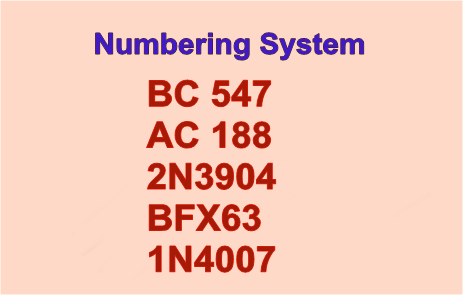
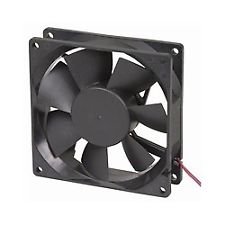

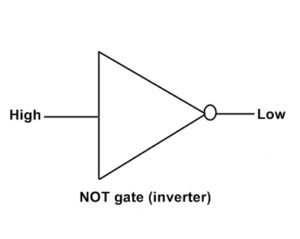
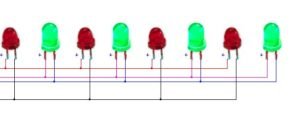
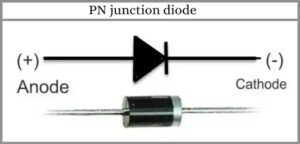

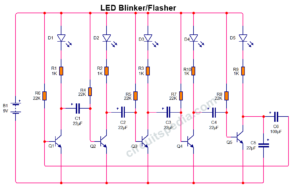
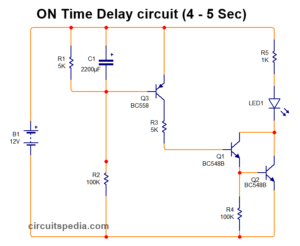
Email: jpkustomx@gmail.com
Comments:
I have a Older brush less single phase generator, it mounts to a Gas motor via pulley setup. it has no branding name or #s. However, I am Hoping you can help me to identify New (or Matching) Varistors (#V350K10 ) / (Diodes # T25-4-D9) combo to replace broken ones in generator. They can be separate components,.. i would solder them in place. I do not see a method to attach files here…i could send picts to help explain… pls respond asap & or offer suggestions in any case thank you jp@kx
You can use Varistors V350K14 or V350K20 these have approximately the same current and Vrms parameter.
You can use also V420k10 or V420K14(Vrms=420).
Diode T25-4-D9 is a high Current Rectifier known as Press-fit Rectifier Diode.
I have no more idea about this type of diode. Please check on google
You can try PF7004, MP352, MP502, PF7000, BYP60A6
You should connect this circuit before Amplifier and give the output of this circuit to the input of the Amplifier. Because this is only filter circuit that passes only low-frequency signal and this is not an amplifier.
Pretty! This has been an incredibly wonderful article. Thank you for providing this information.